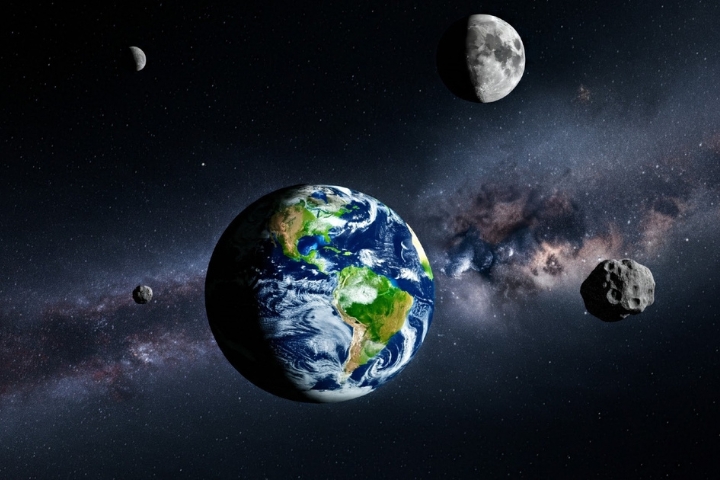From September 29 to November 25, 2024, asteroid 2024 PT5 will temporarily transform into a “mini-moon” as Earth gets ready to receive a new celestial visitor. This tiny asteroid, which has a diameter of around 33 feet (10 meters), was discovered by the Asteroid Terrestrial-impact Last Alert System (ATLAS) on August 7. It will be briefly drawn into Earth’s gravitational field before continuing on its orbit around the sun. Despite the fact that the event offers astronomers and space enthusiasts alike an exciting chance, the mini-moon’s small size and low brightness will probably make it difficult to identify.
Earth Accepts Asteroid 2024 PT5, As a Temporary “Mini-Moon”
Earth will be greeted by asteroid 2024 PT5 as a brief “mini-moon” from September 29 to November 25, 2024, in a thrilling celestial event. This tiny asteroid was found on August 7 by the Asteroid Terrestrial-impact Last Alert System (ATLAS). Its diameter is about 33 feet (10 meters). The asteroid will be drawn into Earth’s gravitational field during its brief visit, completing a horseshoe-shaped orbit before it departs to continue its trek through the solar system. Although mini-moons are a typical occurrence, scientists and astronomers will have a rare opportunity to examine these ephemeral guests with the advent of 2024 PT5.
The designation “Near-Earth Object” (NEO) for asteroid 2024 PT5 refers to asteroids that are quite close to Earth. These objects frequently offer insightful information on the workings of our solar system. Mini-moons, such as 2024 PT5, are usually brief and tiny, but they add to our knowledge of celestial mechanics and open up new possibilities for space travel in the future.
The Challenge of Observation
As exciting as its arrival is, most viewers will probably have difficulty seeing asteroid 2024 PT5. It is too faint to be seen with the unaided eye or even most amateur telescopes, with an absolute magnitude of 22. Because of this low brightness, any possible observations will need specialist equipment. After passing through Earth’s orbit for around 56 days, the asteroid will break free from the force of Earth and return to its orbit around the sun
Mini-moon encounters with Earth have happened before. For example, between 1981 and 2022, the asteroid 2022 NX1 briefly circled our planet. These phenomena arise from asteroids gaining negative geocentric energy, which permits them to be momentarily drawn into Earth’s gravitational field. Although these catches are not uncommon, they usually occur just once per few decades and provide a unique window into the dynamic nature of space surrounding our planet.
It is anticipated that asteroid 2024 PT5 will reappear in January 2025 and once more in 2055, offering more chances for study and observation. Scientists may learn important details about the composition and possible resources of these near-Earth objects as they continue to examine them, opening the door for potential asteroidal mining projects as well as future space travel.




GIPHY App Key not set. Please check settings